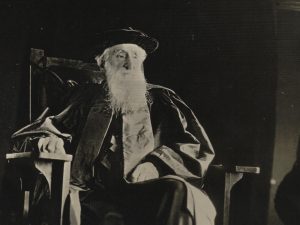My family and I have spent many wonderful holidays in the Kakamega rain forest of western Kenya. The forest is famed for its hiking trails and is popular with bird lovers, with over 300 species in its environs. For butterfly lovers, the forest never disappoints. It has over 400 species. Snake lovers can catch a glimpse of both the black and the green mamba, the rock python and other species of related reptiles. Animals in the forest include bush pigs, bush bucks, tree pangolins and colobus monkeys.
But despite all this, it is the memory of the 150 distinct species of trees in the forest that has helped to transform my leadership. Whenever we hiked, guides would point out various species and describe how each was used by local tribes. I marveled at how he could distinguish among them, as no two trees looked alike. Some grew straight and tall, while others were bent over. Some trunks were thin and others thick. The foliage intertwined as if the trees were hugging one another.
I was saddened to see the trees that had fallen. However, one guide pointed out that downed trees are important too. They open the forest canopy. They provide shelter for small animals and serve as a food source for other animals that eat tree bark. More than that, as fallen trees break down, their remains fertilize the ground, benefiting forest growth. He taught me to even appreciate trees that appear to be broken and fruitless.
Recently, I stumbled upon a quote by Dr. Richard Alpert, who once said, “when you go out into the woods and you look at trees, you see all these different trees. And some of them are bent, and some of them are straight, and some of them are evergreens, and some of them are whatever. And you look at the tree and you allow it. You appreciate it. You see why it is the way it is. You sort of understand that it didn’t get enough light and so it turned that way. And you don’t get all emotional about it. You just allow it. You appreciate the tree. The minute you get near humans, you lose all that. And you are constantly saying, ‘You’re too this, or I’m too this.’ That judging mind comes in. And so, I practice turning people into trees. Which means appreciating them just the way they are.”
Psalm 139:14 says that we are all God’s unique creation, and that he has arranged even the smallest details of our being with excellence. His works are always perfect. So as a leader, I too want to turn people into trees, to appreciate the uniqueness of all God’s children. When I stop judging, and I become curious as to why we are the way we are, I am more engaged. I listen better. I ask questions and have deeper, more meaningful conversations. I am better able to empower others to be all that God created them to be, encouraging them to use their experiences as testimonies to God’s grace.
Perhaps we should all spend more time with trees, admiring them, with their curves, edges and imperfections. Then we can go back to our ministries, psychologically turn each other into trees, and then truly praise God for his remarkable handiwork.













